
Plant Pest Diagnostics Center - Entomology Laboratory
Research Programs - Insecta: Diptera
CDFA Dipterists
- Dr. Chris Borkent
- Dr. Eric M. Fisher (retired)
- Dr. Stephen D. Gaimari
- Dr. Martin Hauser
- Dr. Peter H. Kerr
- Dr. Li Shi
- Dr. Alessandra Rung
- Dr. Shaun L. Winterton
Visit the Sciaroidea page. The diversity and evolution of fungus gnats within the superfamily Sciaroidea (Mycetophilidae, Keroplatidae, Bolitophilidae, Diadocidiidae, Ditomyiidae, Lygistorrhinidae, and members of the Heterotricha group) is a primary research topic of Dr. Peter Kerr. This group of flies is exceptionally diverse in most forested regions, particularly where there is a high diversity of mushrooms. However, while the fungus flora is fairly well documented (see Mushrooms Demystified, by David Aurora), the associated fungus gnat diversity of California's practically non-existent in the literature. Many new species- and possibly new genera- await discovery and scientific description in our state. How these taxa are related to those found in the rest of the world is also the topic of active research at the CDFA
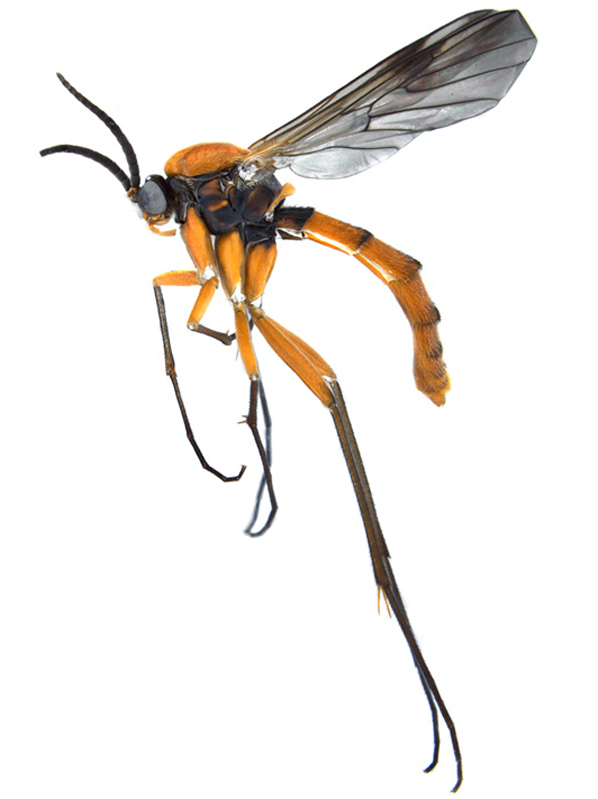
Current projects
- The fauna of California.
Scientist:
- Dr. Peter H. Kerr
- Dr. Chris Borkent
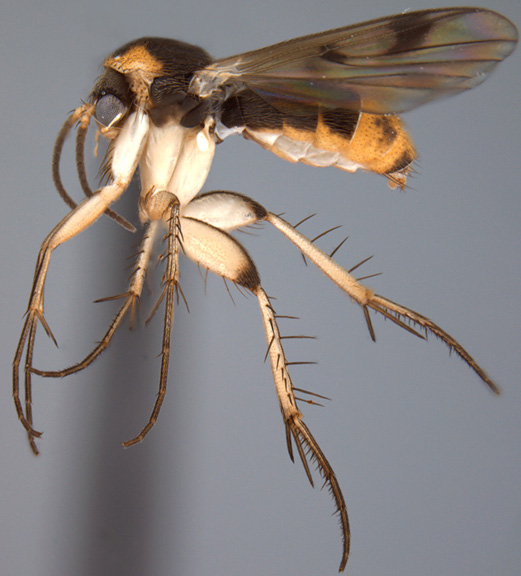
Current projects
- Phylogeny of the family using morphological and molecular evidence.
- Chapter in forthcoming Encyclopedia of Entomology (ed. by J. Capinera, Kluwer Academic Publishers).
- The fauna of Madagascar.
- The fauna of California.
- Biodiversity of forest canopies.
- Descriptions of new taxa in various genera (Azana, Megophthalmidia, and others)
- Revision of the genus Synapha Meigen.
Scientist:
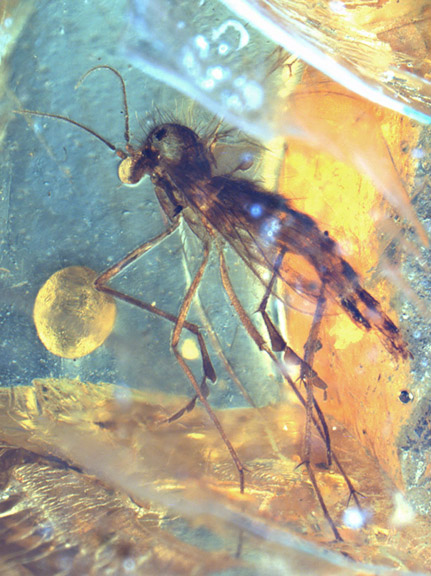
Tabanomorpha
Families belonging to the "rhagionoid" Tabanomorpha (Rhagionidae, Spaniidae, and Austroleptidae) are considered to retain some of the most primitive living members of the suborder Brachycera. The lack of clear family concepts for the group, however, has resulted in an unstable and contentious classification scheme. Dr. Peter Kerr is developing morphological and molecular data to clarify the natural relationships among these taxa.
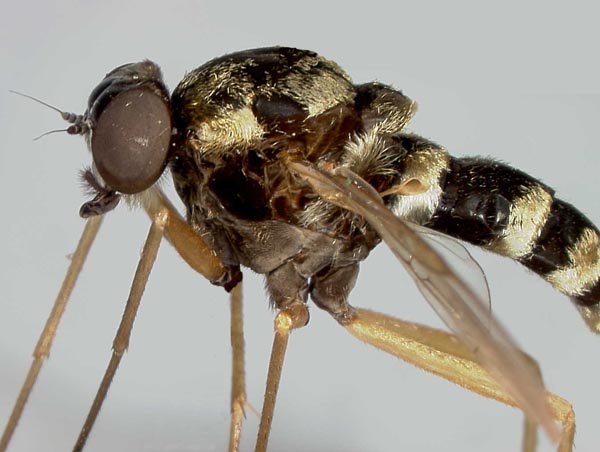
Current projects
- Phylogeny of the family.
- Chapter in Manual of Central American Diptera
Scientist:
Stratiomyomorpha
Dr. Martin Hauser has a primary interest in Stratiomyidae.
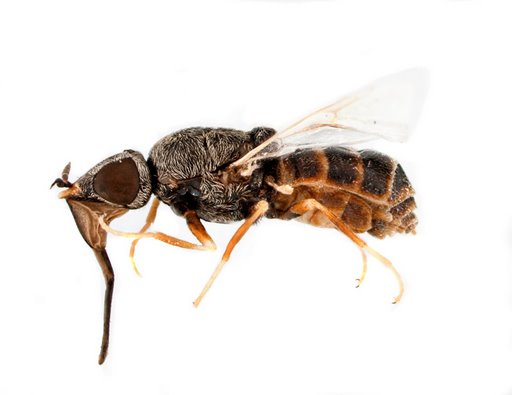
Nemestrinoidea
Drs. Shaun Winterton and Chris Borkent have primary interest in Acroceridae.
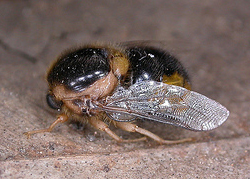
Asiloidea
Visit the Asiloidea page. Asiloidea research at CDFA started with the hiring of Dr. Eric Fisher, and continued in a long line since, first with the hiring of the next dipterist, Dr. Steve Gaimari, then another Associate Insect Biosystematist hire, Dr. Shaun Winterton (who took a position with the Queensland Department of Primary Industries in his home town of Brisbane, Australia, and then returned to CDFA), then with the hiring of Dr. Martin Hauser, first as a postdoc, and then as an Associate Insect Biosystematist.
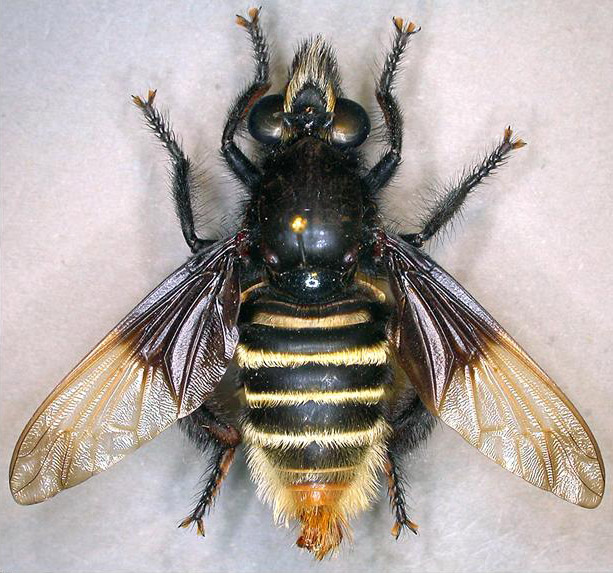
Current projects
- Systematics of Andrenosomatini.
- Chapter in Manual of Central American Diptera
- The fauna of Madagascar.
- Nearctic catalog of the family.
Scientist:
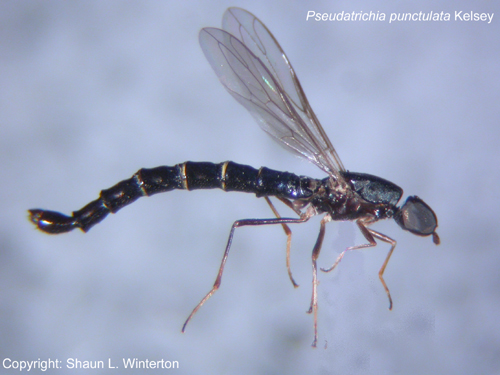
Current projects
- Chapter in forthcoming Manual of Afrotropical Diptera.
- Funded by NSF DEB-0614213 (see project website):
- Phylogeny of the family, with construction of on-line LucID tools.
- Revisions of various genera.
- World catalog of the family.
Scientist:
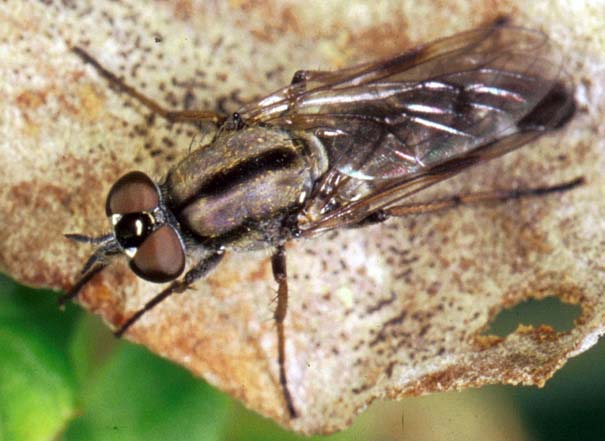
Current projects
- Gaimari projects:
- Revision of the genus Ozodiceromyia Bigot.
- Revision of the genus Cyclotelus Walker.
- Revisions of the smaller remaining genera of Cyclotelini with new species (Anolinga Gaimari & Irwin, Bugulaverpa Gaimari & Irwin, Coleiana Gaimari & Irwin).
- Hauser projects:
- Revision of Henicomyia
- Winterton projects:
- coming soon
- Gaimari, Hauser, Winterton: Collaboration with Kevin Holston:
- Stiletto Flies of the World website, with LucID keys to genera (see project website).
Scientist:
Aschiza
Dr. Martin Hauser has a primary interest in Syrphidae.
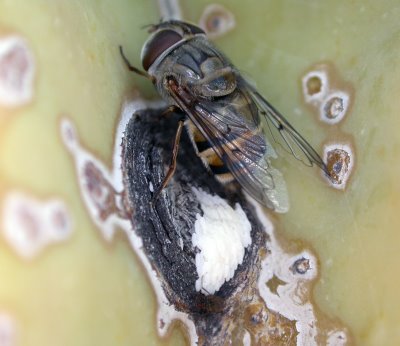
Lauxanioidea
Lauxanioids are the primary research focus for Steve Gaimari. The Lauxanioidea is a near basal acalyptrate superfamily whose component families have taken two major evolutionary life history pathways. The first ("chamaemyiid-type"), exemplified by Chamaemyiidae [29 genera & subgenera, 334 species], is larval predation on plant feeding aphidoid and coccoid Sternorrhyncha (Insecta: Hemiptera). The second ("lauxaniid-type"), exemplified by Lauxaniidae [193 genera & subgenera, >1894 species] and Celyphidae [8 genera & subgenera, 114 species], is larval saprophagy in decaying plant matter, likely feeding on associated microorganisms. The remaining family, Eurychoromyiidae [monotypic], currently has unknown feeding habits, although uncovering its life history may be important for understanding certain aspects of lauxanioid evolution. My continued focus (funded by NSF DEB-0075206 ) is to of comprehensively elucidate the phylogeny of the lauxanioid genera of the world, with several primary goals: 1) Place all genera into a phylogenetic context, assessing the monophyly of major subordinate groups; 2) Propose a biologically predictive, phylogenetic classification for genera within the superfamily, specifically revising the current classification of chamaemyiid genera, reassessing the current Homoneurinae/Lauxaniinae classification of Lauxaniidae, and reevaluating the family status of the enigmatic Celyphidae and Eurychoromyiidae which may be subordinate groups within Lauxaniidae; 3) Examine patterns of lauxanioid cladogenesis relative to vicariant events in geological history; 4) Explore the significance of feeding patterns within the larger clades of Lauxanioidea, particularly those related to the major feeding shift between "lauxaniid-type" saprophagy and "chamaemyiid-type" predation. Among other overarching lauxanioid projects, several other products are in development: 1) publishing a world catalog of the superfamily (listed below for individual families); 2) developing web pages to serve an up-to-date nomenclatural database for all lauxanioid taxa, including images of primary types for all species, PDF's of literature, etc.; 3) serving inventory lists for major collection holdings of lauxanioids (searchable by taxon or by collection).
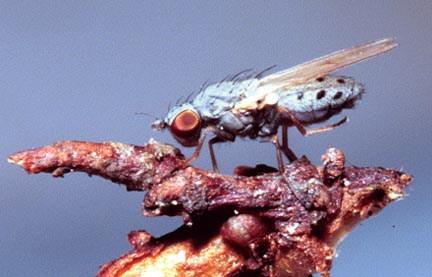
Current projects
- Phylogeny of the family, and its placement within the context of Lauxanioidea.
- Chapter in forthcoming Manual of Afrotropical Diptera.
- Revision of the New World genus Ortalidina Blanchard.
- Revisions of various smaller genera, and descriptions of new species.
- World catalog of the family.
- Collaboration with Vitali Tanasijtshuk:
- Revision of the New World genus Leucopina Malloch.
Scientist:
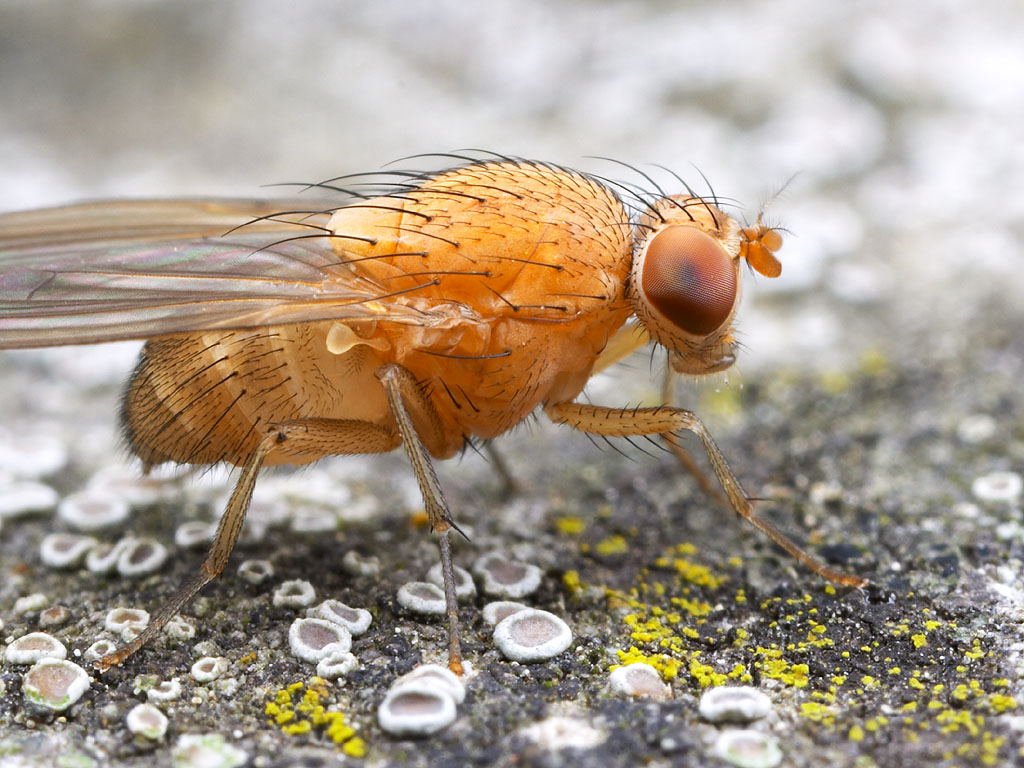
Current projects
- Phylogeny of the family, and its placement within the context of Lauxanioidea.
- The fauna of Fiji (see project website), currently working to describe the species of the genera Eucyclosis Bezzi, Prochaetops Bezzi, Trypetisoma Malloch, and the Homoneura subgenera Solomonia Malloch and Minettioides Malloch.
- The fauna of Madagascar.
- The fauna of New Caledonia.
- The fauna of Thailand
- Revision of the Neotropical genus Hypagoga Hendel.
- Revision of the Neotropical genus Ritaemyia Frey.
- Revision of the New World genus Pseudocalliope Malloch.
- Descriptions of new genera, and revisions of genera, of Australasian lauxaniids.
- Revisions of various other genera, including new genera, and descriptions of new species.
- World catalog of the family.
- Collaboration with Vera Silva:
- Conspectus on the Neotropical fauna (catalog, keys, descriptions of new genera).
- The fossil lauxaniids from Dominican amber.
- Revisions of various Neotropical genera, including Baliopteridion Papp & Silva, Chaetocoelia Giglio-Tos, Celypholauxania Hendel.
- Collaboration with Ding Yang and Li Shi:
- Revisions of the Chinese faunas of various genera.
Scientist:
Opomyzoidea
Research on opomyzoids at CDFA started with Dr. Steve Gaimari's interest in Odiniidae, and his general interest in acalyptrates. Dr. Gaimari has also done a small amount of work with agromyzids, and Drs. Owen Lonsdale and Li Shi came on board to do research in agromyzid systematics. The research topic was further developed with the hiring of Dr. Alessandra Rung, who has been working on the phylogenetics of the superfamily in collaboration with Dr. Isaac Winkler.
Current projects
- Chapter in forthcoming Manual of Afrotropical Diptera.
- Collaboration with Wayne Mathis
- Revision of the genus Aulacigaster
- Chapter in forthcoming Manual of Central American Diptera (in press).
Scientist:
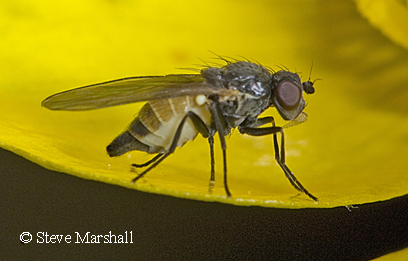
Current projects
- Revisions of California Agromyzidae
- Revision of Melanagromyza
- Revision of Ophiomyia
Scientist:
- Dr. Li Shi
- Revisions of California Agromyzidae
- Revision of Melanagromyza
- Revision of Ophiomyia
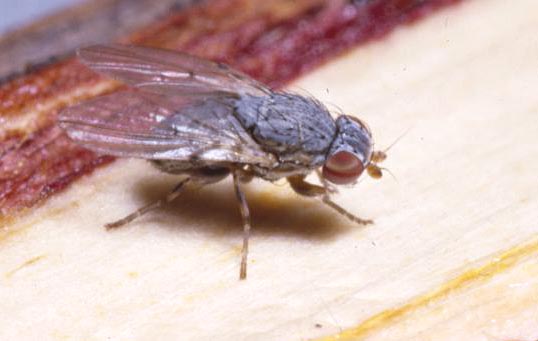
Current projects
- Phylogeny of the family.
- The fauna of Central America.
- Revisions of various genera.
- The Odinia of western North America.
- Chapter in forthcoming Manual of Afrotropical Diptera..
- Collaboration with Wayne Mathis:
- World catalog of the family (in press).
- The fauna of the West Indies.
- Odiniidae of the DELMARVA states.
- Collaboration with David Grimaldi:
- The fossil odiniids from Dominican amber.
Scientist:

Current projects
- Collaboration with Wayne Mathis
- Revision of the genus Planinasus
- Chapter in forthcoming Manual of Central American Diptera (in press).
Scientist:
Sphaeroceroidea
Research on sphaeroceroids at CDFA started with Dr. Steve Gaimari's interest in Odiniidae(!). In working with what he thought to be a new genus of odiniid that modified the concept of the family somewhat, he found that what he actually had were several new species of the heleomyzid genus Paraneossos. At least he was in good company, as the placement of the genus was questioned from the beginning. Marshall Wheeler (the author of the genus) wrote that Curt Sabrosky and George Steyskal examined specimens, determining that "Certain features of the face and cheeks are strongly suggestive of some members of Odiniidae... but in other respects there is considerable disagreement." When the genus was described, it required modification of the concept of Trixoscelididae (now Heleomyzidae), although its current placement in the tribe Gephyromyzini is outside the concept of the old "Trixoscelididae", which is at equivalent rank within the family.
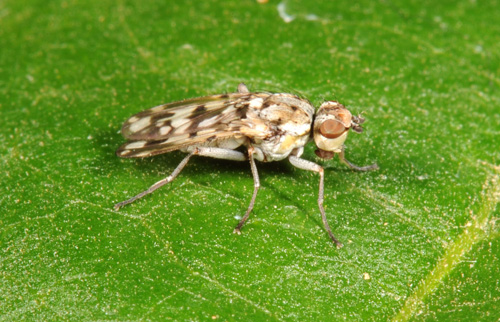
Current projects
- Revision of the New World genus Paraneossos Wheeler.
Scientist:
Tephritoidea
With the importance of tephritid fruit flies to agriculture, it is natural for some research to be underway at CDFA. With a funded project on exotic fruit flies (through USDA's Specialty Crop Block Grants program), two postdocs have done their research here - first Dr. Peter Kerr (who we subsequently hired into the scientist ranks here), and then Dr. Martin Hauser (who has since moved to the University of South Carolina to take up a position as Lecturer).
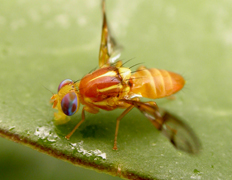
Current projects
- Collaboration, Steve Gaimari & Martin Hauser:
- Revision of the genus Campiglossa Rondani, with a LucID key to species.
- LucID key to the California species of the family, including invasive pest species periodically encountered and eradicated.
- Collaboration, Peter Kerr & Allen Norrbom:
- Molecular systematics of the genus Anastrepha Schiner.
Scientist:
Diptera (general)
Back in 1994, a collaboration with Mark Anderson (Jet Propulsion Laboratory/Cal-Tech, Pasadena, CA) began with simple Atomic Force Microscopy (AFM, in the scanning probe family of instruments) imaging of dipteran eyes, mostly out of curiosity of both scientists. AFM proved to show very interesting nanometer scale morphological variation, with some apparent differences among distantly related taxa. Ultimately, this collaboration extended into using an extension of AFM, called Raman-Atomic Force Microscopy (RAFM), which reveals nanometer-scale surface chemistry. Their published work on Dipteran eyes (Anderson & Gaimari 2003) was the first demonstration of apertureless near-field Raman spectroscopy on an intact biological surface. This work is continuing, along with addition of a new family of spectroscopic instruments to perform High Resolution Mass Spectroscopy, Direct Analysis in Real Time (DART).
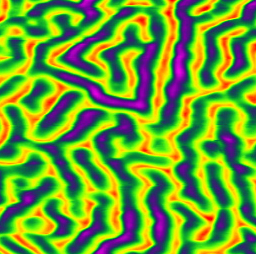
Current projects
- Collaboration with Mark Anderson:
- Surveys of nanometer-scale surface morphology of external structures (e.g., ommatidia, ocelli, wings).
- Surveys of differences in point-differences in surface chemistry on external structures (e.g., in peaks versus valleys of surface morphology).
Scientist:
Current projects
- Collaboration with Mark Anderson:
- Use of Direct Analysis in Real Time (DART) to explore such areas of biochemistry as pheromones, attractants, and pervasiveness of pesticide loads in the general populations of non-target insects.
Scientist:
Entomology Sub-Menu
Plant Pest Diagnostics Center
CDFA Collections
General Info/Links
Contact Us
3294 Meadowview Road
Sacramento, CA 95832
Phone: 916-262-1100
Fax: (916) 262-1190

